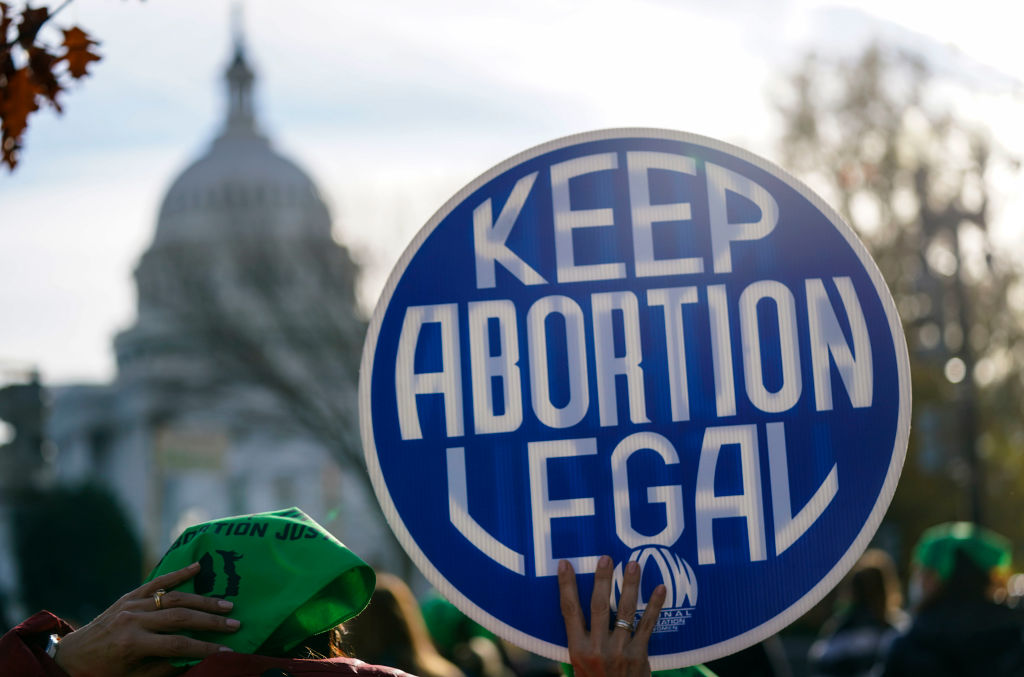Democrats head into the midterms praying that abortion-rights supporters will reward them for failing. If the Democratic Party has stood for anything over the past half-century, it has stood for the right to end a pregnancy. All the party had to do was to defend the status quo established by Roe v. Wade and Planned Parenthood v. Casey.
But it proved unable to do that, despite the two-term administrations of Bill Clinton and Barack Obama, despite controlling the Senate from 2007 to 2015 and again from 2019 until now, and despite the virtual monopoly Democrats enjoy on the sympathy of the news and entertainment media. With all these advantages, Democrats could not safeguard a right that their voters consider fundamental. Now Democrats expect voters to trust them to regain what they lost.
The party’s midterm strategy has three pillars. The least important of these is its policy record: after two years of paralysis, congressional Democrats finally passed a major piece of legislation late in the summer, the Inflation Reduction Act. President Biden, meanwhile, is acting unilaterally to forgive student loans — a bid to get young voters to turn out for his party in November.
Democrats are not counting on gratitude to save their majorities in the House and Senate. The more important pillars of the Democratic strategy rest on an abidingly dependable emotion: fear. This means fear of Donald Trump and fear of Republican efforts to outlaw abortion.
The Trump hype is getting old, and it didn’t save Terry McAuliffe and his fellow Democrats in Virginia’s elections last year. Congressional Democrats have tried to put Trump back in the headlines, but to run against Trump in 2022 is still like running against George W. Bush in 2010.
This leaves a Dobbs backlash as the highest hope for Democrats this November. Will college-educated women turn out in record numbers to save the party that couldn’t save Roe? The early evidence is not very compelling.
In Kansas an attempt to amend the state constitution to give the legislature power to restrict abortion failed, 59 to 41 percent. In New York, an August special election for a House seat already held by a Democrat was won by a Democrat, an outcome credited by the media to an abortion backlash and celebrated as a portent that Republicans would fall short in November.
Yet that’s a lot of weight to place on a single House race in a blue state. And while Kansas is a solidly red state, it’s one in which the GOP has historically been divided between moderate and conservative factions, with the moderates favoring legal abortion. What Kansas shows is the opposite of what Democrats need to be true — it shows that a state can remain Republican even when most of its voters reject the anti-abortion policies of the conservatives who dominate the GOP.
A pro-life majority is not a prerequisite for a Republican majority. This doesn’t mean that the GOP won’t face adversity as a result of Dobbs. The Republican coalition’s threshold for finding consensus on abortion was as low as it could possibly be while Roe stood: no-exceptions opponents of abortion could even find common cause with Republicans who wanted to keep abortion legal but objected to Roe on grounds of judicial philosophy. And it’s always easier to criticize an existing policy than it is to devise an alternative.
Now that Roe is gone, the GOP has to keep its coalition together — and highly motivated — with an articulate positive agenda rather than a simply negative one. Or does it? As long as the Democratic position is that abortion must be unrestricted and universally enshrined as a human right, without regard for local beliefs, the old anti-Roe coalition still has every reason to stick together.
If the Democrats remain the party of abortion always and everywhere, the GOP can maintain a broad coalition. If voters nationwide must choose between one all-or-nothing position or the other, they will more likely choose the permissive one. But if the choice is between abortion-rights absolutism and a variety of local approaches, variety will prevail.
Proof of this is to be found in the fate of Roe itself. With every advantage on the side of the status quo, Roe still could not endure because it violated the consciences of too many Americans in too many states — enough voters in enough states to elect Republican presidents and Republican Senate majorities, who eventually appointed justices who would overturn Roe.
Dobbs will not save the Democrats, just as the Democrats could not save Roe. What allowed Roe to stand as long as it did was the success of an earlier Democratic Party in getting Americans to accept abortion rights as a natural extension of the ideals of the Declaration of Independence and Bill of Rights.
But educators and journalists who support the Democratic Party have undercut those ideals, stigmatizing the likes of Thomas Jefferson and James Madison to the point that even invoking them to validate old rights like free speech no longer works. The party of abortion is now the party of 1619 — and Nikole Hannah-Jones is a poor substitute for Jefferson.
This article was originally published in The Spectator’s October 2022 World edition.

























